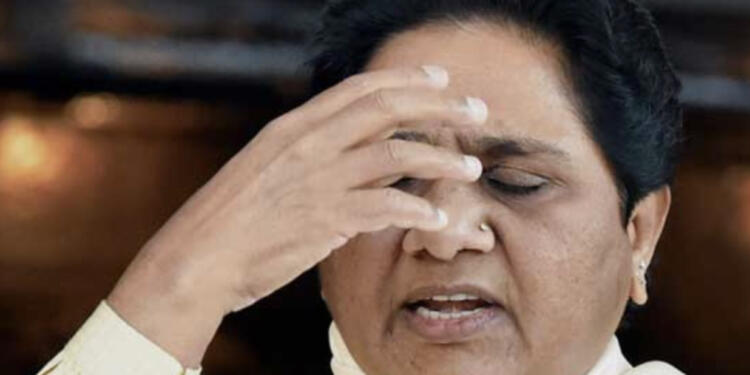Mayawati is nowhere to be found. The famed ‘Behenji’ of Uttar Pradesh seems to have vanished from active politics. Mayawati has retired from politics without actually announcing her departure. What else explains the Bahujan Samaj Party’s explicit absence from public discourse as Uttar Pradesh enters a full-blown election season? Elections are slated to begin in the largest state of India in less than a month. That, by all estimates, is not enough time for a party that has not even started campaigning yet, to win the election.
Bahujan Samaj Party (BSP) leader Mayawati is at the wane of her political powers. Ever since Prime Minister Narendra Modi started sweeping state and general elections alike, regional parties such as the BSP, which relied overwhelmingly on caste-based equations, have seen their political presence dip to alarming levels.
Mayawati’s Fall from Kingmaker to Damning Insignificance
Once touted as the next big national party that could have solely been the face for Dalits, the BSP has now lost touch with its core voter base. Dalits comprise about 20 per cent of the population in UP and are a crucial voting bloc in elections. Seventeen of the 80 Lok Sabha seats in UP are reserved for Scheduled Castes.
However, in the 2019 Lok Sabha polls, a Mayawati-led BSP could win only two seats (Nagina and Lalganj), while the BJP swept 15, including the Hathras seat. Meanwhile, in the 2014 Lok Sabha elections, BJP won with an even bigger margin, sweeping all the 17 reserved constituencies. Safe to say, the statistics point that BSP fell out with the Dalit voters of UP a long time back.
What has supposedly worked in BJPs favour is the fact that several tall Dalit leaders have switched camps to the BJP from BSP. The lack of party leadership from Mayawati has hurt the party’s cause. And then, some BSP leaders have also jumped ship to the Samajwadi Party. Akhilesh Yadav, for one, has been trying to woo the Jatav voters of Uttar Pradesh this time.
Read more: 2022 UP elections will mark the end of Mayawati as a tall Dalit leader
Mayawati, however, is nowhere in the scene. She is not even fighting to retain her vote bank, leave alone winning the state elections. Mayawati was last relevant in Uttar Pradesh, and in New Delhi, from 2007 to 2012. BSP came to power in UP with a majority in the 2007 assembly election, winning 206 of the 403 seats.
Five years later, the Akhilesh Yadav-led SP defeated her by winning 224 seats. The BSP’s seat count was reduced to 80. In 2017, when the BJP swept the state with 312 seats, the BSP was reduced to 19 seats. Mayawati has not been able to recover from this electoral decimation ever since.
End of Road for Mayawati
Mayawati was once a very powerful politician. By virtue of being the chief minister of Uttar Pradesh, she was seen as one of the most important leaders of India. Mayawati has led Uttar Pradesh as chief minister four times, although a complete tenure was served by her only from 2007 to 2012. The three previous instances saw her becoming chief minister for short periods of time.
Mayawati was once a kingmaker. She heavily influenced the decisions made by central governments in New Delhi. Mayawati always got what she wanted. Today, however, she has been reduced to a political nobody. Mayawati is the old, overworked derby horse that has seemingly reached the end of its career.
Unless Mayawati makes a concerted effort to turn the wheel and reinvent her party machinery, develop a second line of leadership, and create a credible political message – the Dalits and other lower-caste votes will continue to evade her. Even if she does overhaul the BSP, chances are, the party will not be able to recover any time soon. Essentially, Mayawati is now a spent force, and under her leadership, the BSP cannot become a significant political force in Uttar Pradesh in the near future.


































